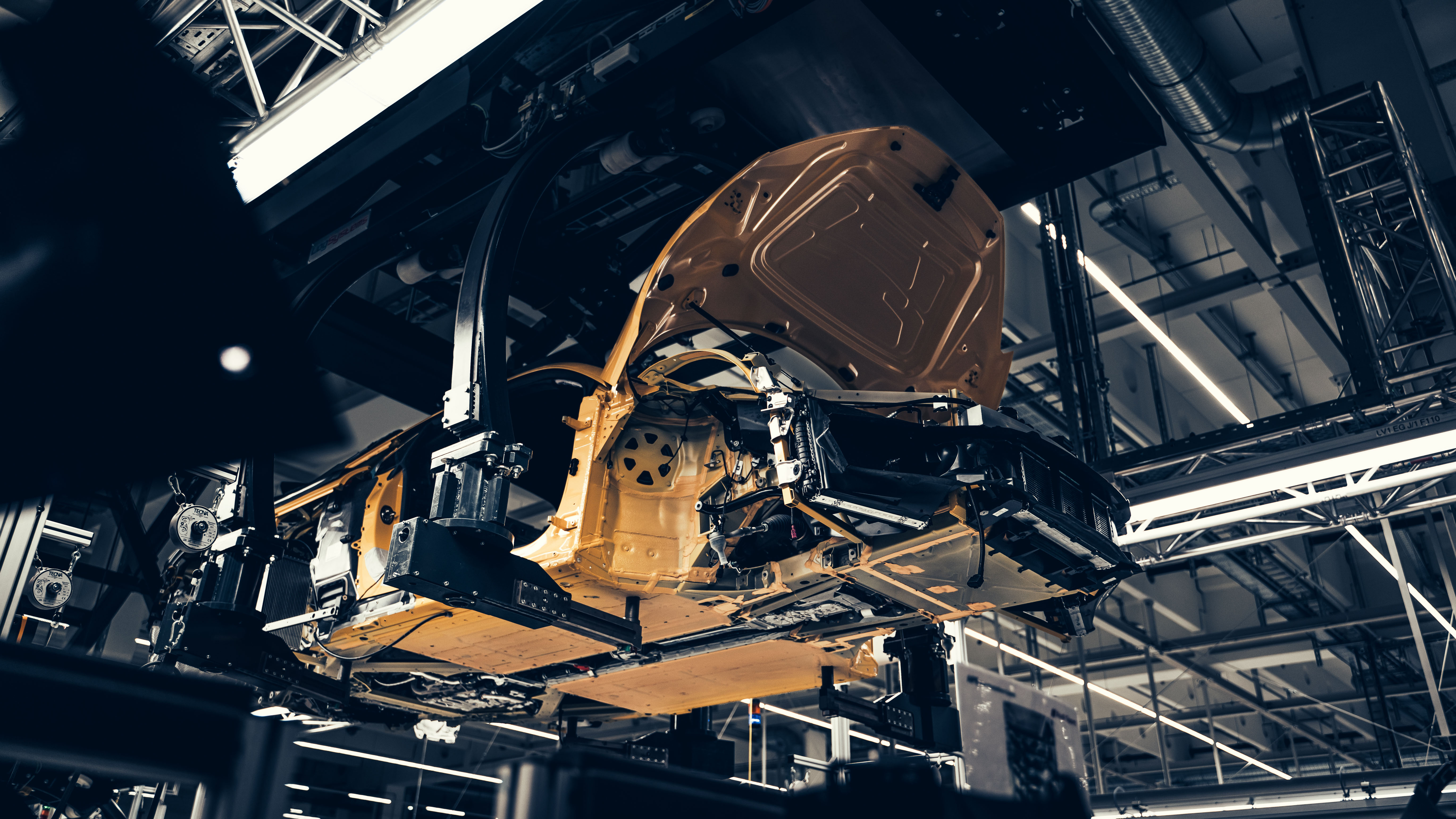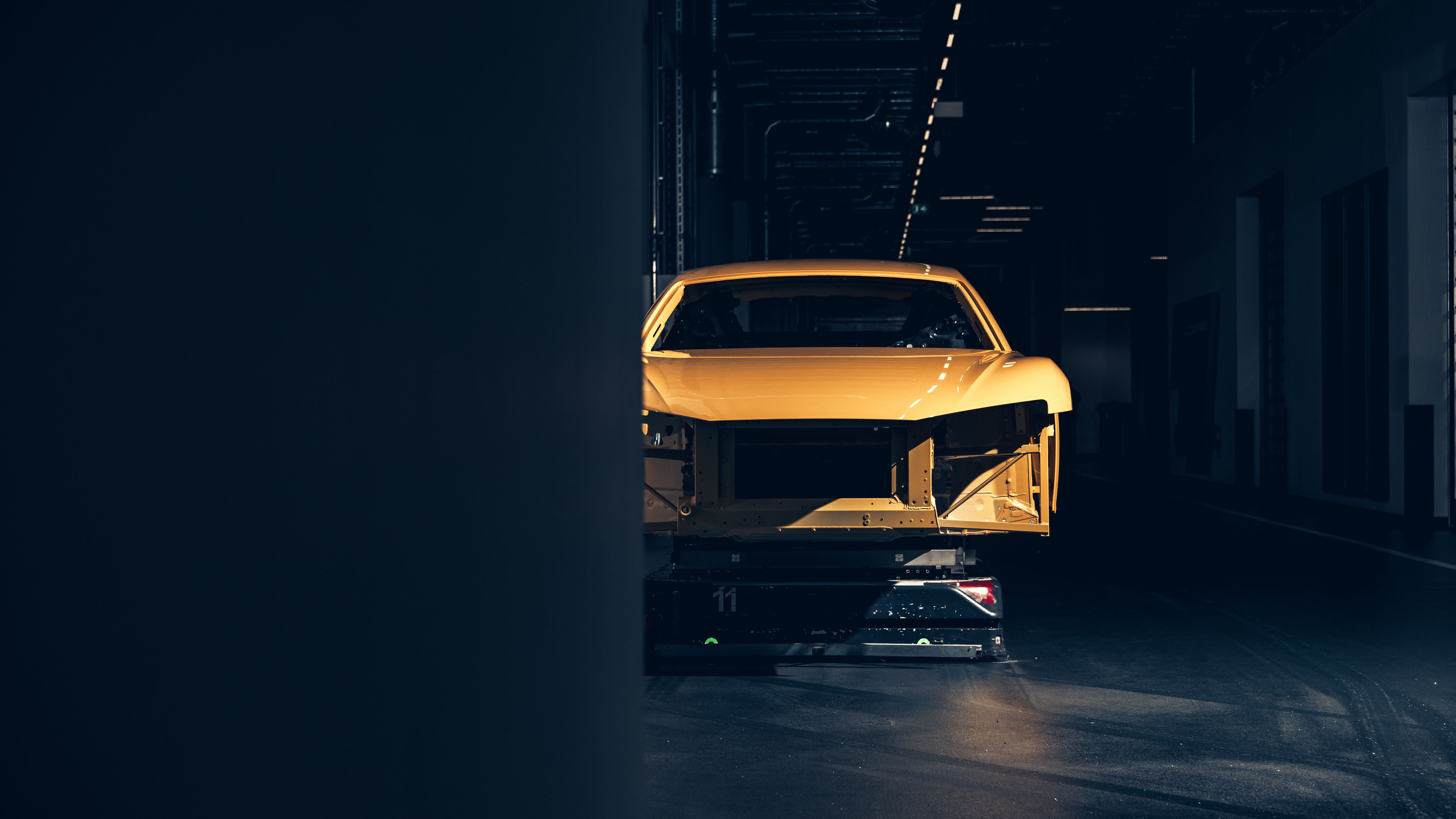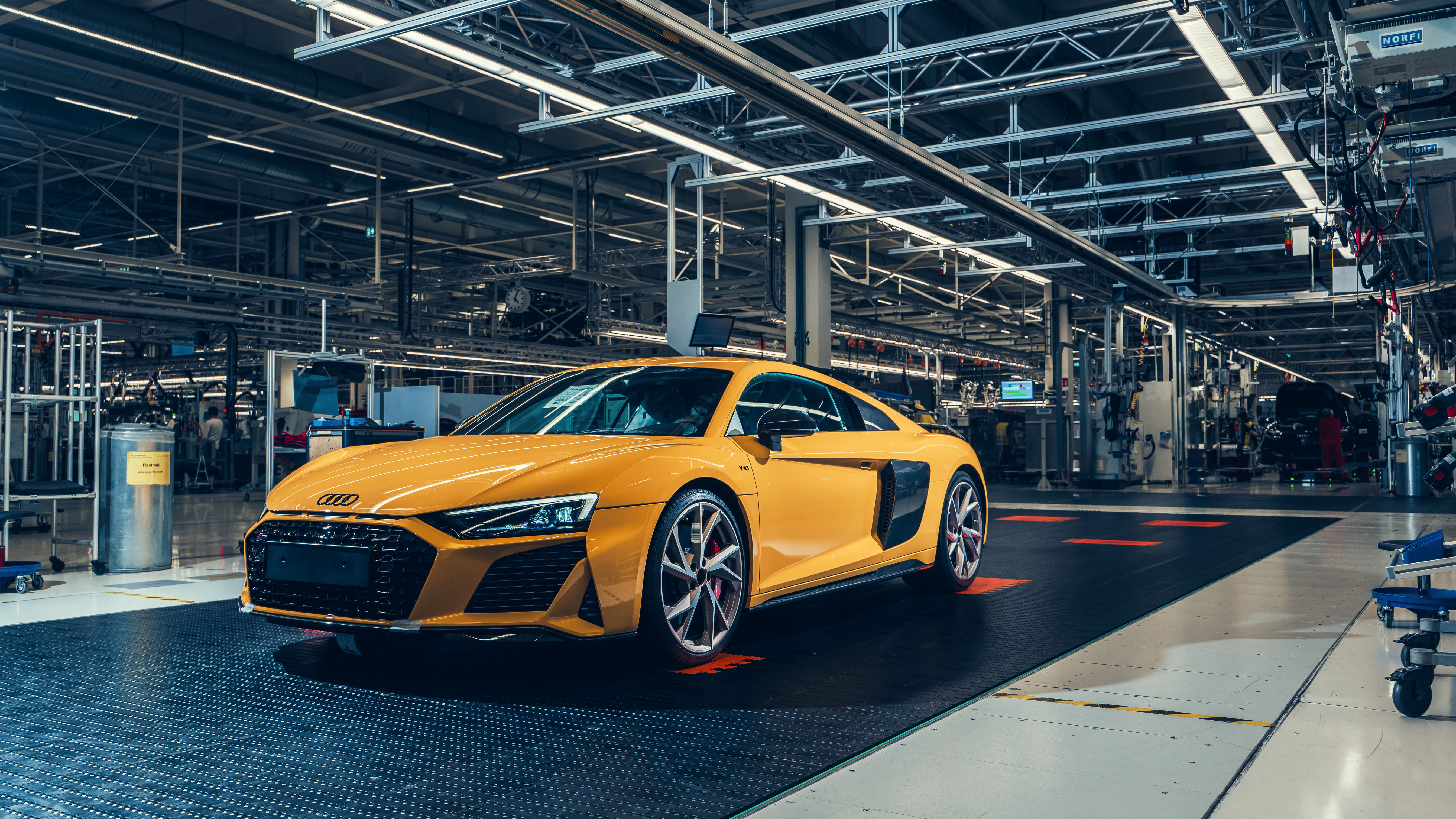
The Last of Us: this is the final Audi R8, and we helped build it
The Audi R8 is no more. TG was there to witness the final build, and we couldn’t help but get involved...
It's 5am on an industrial estate just outside the city of Heilbronn in southern Germany. Never let it be said that this job isn’t glamourous. And yet, despite the smokestack location, the day is set to be filled with fanfare.
It begins with a proper Stars in their Eyes moment, as the painted bodyshell of a Vegas Yellow Audi R8 rises up from the basement below and is then rapidly revealed by an overdramatic garage door. Just missing the smoke machines. Of course, I wouldn’t be out of bed at this time to watch any old R8 get pieced together, but this is the last ever car. Yep, after two generations and 18 years of production, it’s the end of the road for Audi’s internal combustion-engined supercar. Over 45,000 examples have been built since its introduction in 2006, and while the name could possibly appear on a future flagship EV, the R8 as we know it is soon to be dead.
The factory is Audi’s small Böllinger Höfe plant. Although we say small there are still 41,000 square metres of production space and around 1,500 employees. The R8 has been built here since the place opened in 2014, but in 2020 the e-tron GT muscled itself onto the same line and ensured that the dominant sound in these halls is of tyre squeal on polished floors rather than the echo of V10s.
Photography: Olgun Kordal
Speaking of engines, I’d assumed the Lambo-developed 5.2-litre V10 would come straight from Audi’s plant in Hungary ready to be plugged into the middle of the R8’s carbon and aluminium spaceframe, but stumbling across the engine room it’s clear that isn’t the case. In fact, over 100 extra bits need to be fitted to each engine before it’s ready to meet its chassis.
Sensing an opportunity to pencil TG (very lightly) into the history books, I ask whether there’s any of the build I can ‘help’ with. I’m shown the final power unit and a heat shield that needs to be secured before the exhaust manifold can be attached. Two bolts go in perfectly, the last gets stuck some way short of where it needs to be. Oops.
Hoping that someone will fix my shoddy craftsmanship, it’s back to watching the brilliantly bright body making its way through the different stations on the shop floor. I’d expected the process to be mostly automated with robots gluing each piece together in a balletic construction dance, but it turns out the R8 is still mostly built by hand and relies on a quite incredible number of screws. There’s also more than one sighting of a hammer. This is excellent news.
Instead, inanimate involvement is mainly limited to the transportation of the car as it passes between each station. It starts off on an autonomous robotic platform known as a Fahrerloses Transportsystem and then moves onto the Gehänge – a rollercoaster-style overhead crane system that can spin the car for ease of access. Most of the early stations actually involve stripping off body panels that were previously attached, before a maze of wiring is plugged into the floor, roof and under the bonnet.
After three hours – and strangely just after the sun visors have gone in – it’s time for the engine. Each employee on this section of the line took around six months to learn the different stages, and the engine is so tightly packaged they use every available gap to work through. Oh, and because the e-tron is built on the same line, when an EV rather than an R8 passes through their station, the engine fitters get an extra 12 minute cigarette break. They’re understandably disappointed about the R8’s demise.
“We are all petrolheads. We are sad,” says section boss Marcus Blau. “It’s different. It’s a super sports car and we are Audi Sport so of course we are proud to build the R8. It’s not like an A1.”
It certainly isn’t. At the end of the R8’s life you could spec the standard car in either rear-wheel drive or all-wheel drive forms. If you went for the former you’d ‘only’ get 562bhp. Obviously, that wouldn’t do for the last of the line, so it’s getting Audi’s quattro AWD system and 612bhp.
It was 2009 when a production-spec R8 was given a V10 for the first time, and ever since then Audi’s sensible supercar has been dominated by its engine. While it may not have had the steering feel and delicacy of contemporary Porsche 911s or entry level McLarens, its naturally aspirated heart revved to 8,700rpm and made a noise that echoed all the way to Audi’s HQ in Ingolstadt, over 100 miles away.
Top Gear
Newsletter
Thank you for subscribing to our newsletter. Look out for your regular round-up of news, reviews and offers in your inbox.
Get all the latest news, reviews and exclusives, direct to your inbox.
After just over an hour on the engine line everything is plumbed in and the final R8 moves closer to completion. At one point it looks as though a bar fight could break out as four engineers hold driveshafts and drills as they wait for the car to drop from the ceiling, but it’s all supremely efficient despite the hand built nature. Each employee is trusted to get on with every necessary job at their station, and after 12 minutes they confirm that everything has been done and the line rolls on. The logistics task to deliver exactly the right parts at exactly the right time has been perfected too, despite two completely different cars being put together at the same time on the same line.
Later on, I’m distracted by one of the logistic department’s excellent transport scooters, and it’s only then I realise that I haven’t actually seen any natural light all day. The bright white lights of the factory are clearly getting to me. Heck, we’ve already been here for two of the day’s three shifts. But the car is coming together with the centre console plugged in, the electrically adjustable seats connected up, the doors attached and the glass lifted in by hand. All of the plastic panels are whacked into place too and fit straight off the bat with little clips holding them in place, and there aren't even that many robots checking the puny humans' work. Audi still uses little keyring swatches to check the panel gaps.
If we get this wrong the whole thing goes in the bin
As the headlights come on for the very first time I ceremonially hand over the four rings. It’s not that Audi doesn’t trust TG... in fact, it is made quite clear that it doesn’t trust us with this particular job. “If we get this wrong the whole thing goes in the bin,” says TT and R8 spokesperson Liza Kellner. Probably for the best, you should see the last shelf I put up.
With just two stations to go the plastic protective covers are whipped off the wings and the scratch-saving tape is stripped off. It’s so nearly the R8’s end. As I spot the bronzed 20in wheels I’m questioning whether they’ll go with the yellow paint, the red calipers and the exterior carbon pack. Not to worry – it looks fantastic and will certainly stand out in the Audi Tradition collection.
As tyres meet terra firma for the very first time I jump in to witness the final checks. Everything that’s electrically operated inside the cabin is tested, before it’s time to push the big red button on the steering wheel. The V10 barks into life (thank God) and there’s a round of applause from the gathered engineers and suppliers. It feels like a real moment in history and I’m proud to have been involved, but pushing the starter button with a small audience watching on does slightly make me feel like a Z-list celeb at a provincial Christmas lights switch on.
Still, this car will now go on for final visual checks before it’s subjected to a leak test in a rain chamber and a shakedown on the Autobahn outside. Every single one of the 45,000+ R8s built before this one had the same treatment before being wrapped up and sent off to customers, so it’s a bit of a shame that this one is destined for a museum. Although given TG’s involvement in the build, that might just be for the best.
Trending this week
- Car Review
BMW iX3











